Pichler & Traupmann Architects
Mario Gasser
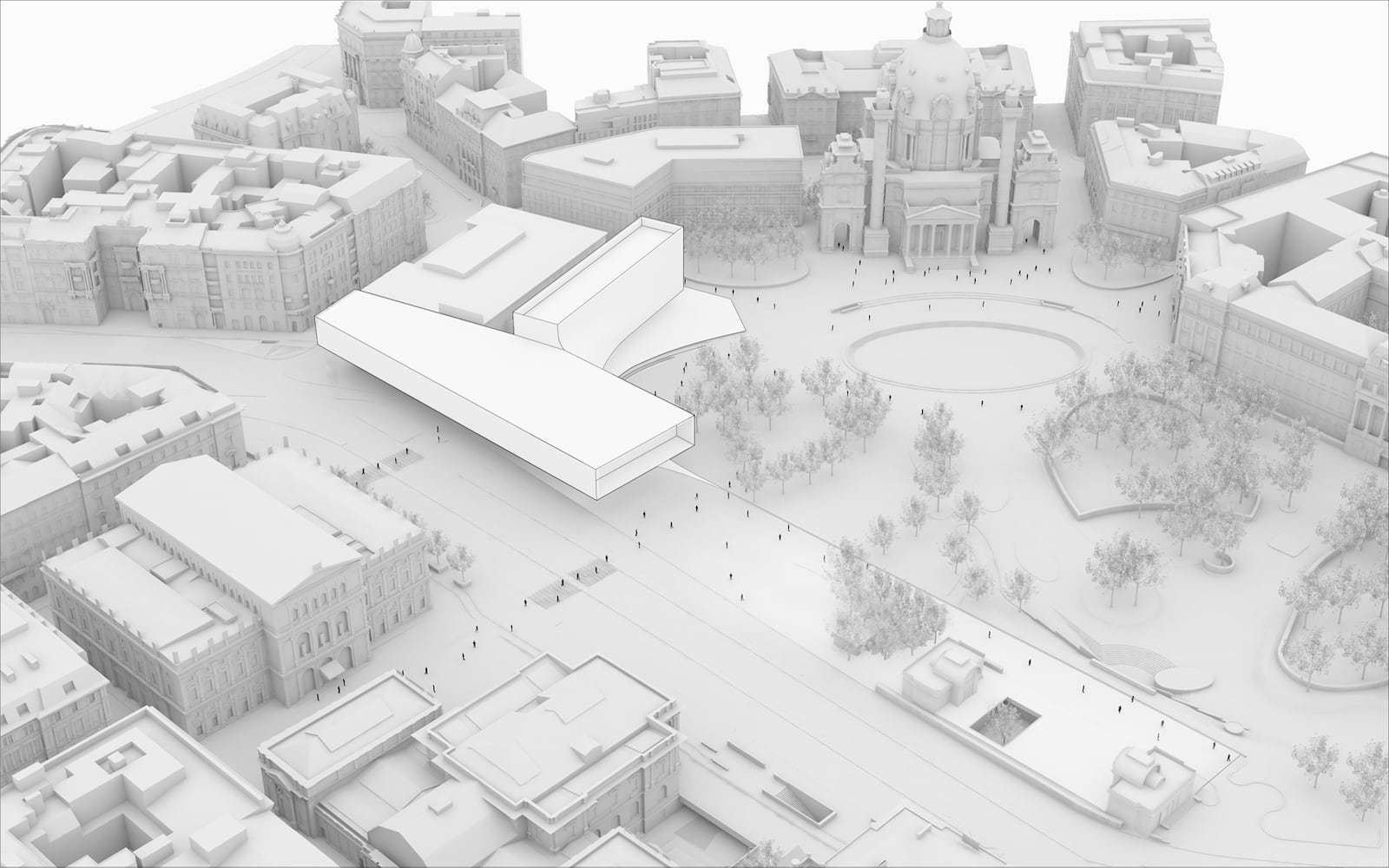
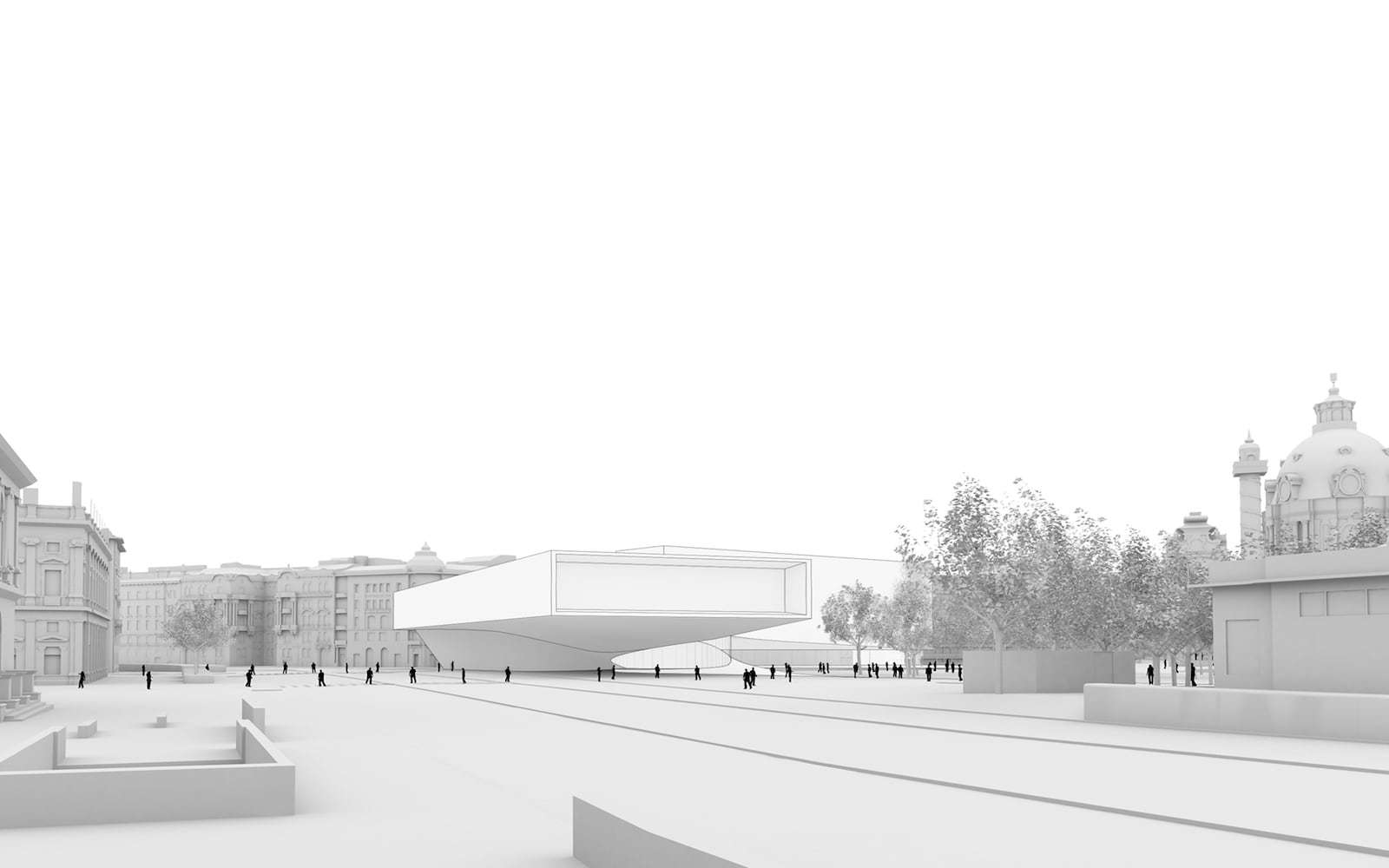
2015
Vienna
Competition
Culture
18.075 m²
Year |
Venue |
State |
Category |
Size |
|---|---|---|---|---|
2015 |
Vienna |
Competition |
Culture |
18.075 m² |
Year
2015
Venue
Vienna
State
Competition
Category
Culture
Size
18.075 m²
We discover the chance of the century to answer, at a single stroke, a number of open questions that have been the subject of discussion for years:
The question of how to define and terminate the eastern area of Karlsplatz.
The question of the setting and surrounding for the Karlskirche.
The question of how to activate the eastern area of Karlsplatz and make it more attractive.
The question of how to increase the attractiveness of the Wien Museum (Vienna Museum) and best present it in its urban context.
A movement coming from the long axis of Karlsplatz, starting with the Otto Wagner pavilions, washes around the existing museum, where it separates into two directions and produces volumetric forms: a horizontal wing and a vertical one.
The horizontal museum wing houses the main exhibition and presents the first museum in Vienna to be newly erected by the Austrian Republic, confidently located in the heart of the city. It hovers, projecting into the space of the former Wien valley through which the river and the public transportation lines still continue to flow – albeit underground. This deliberate incision in the fluid element ensures that the natural ground of the park and its mature trees must hardly be interfered with at all.
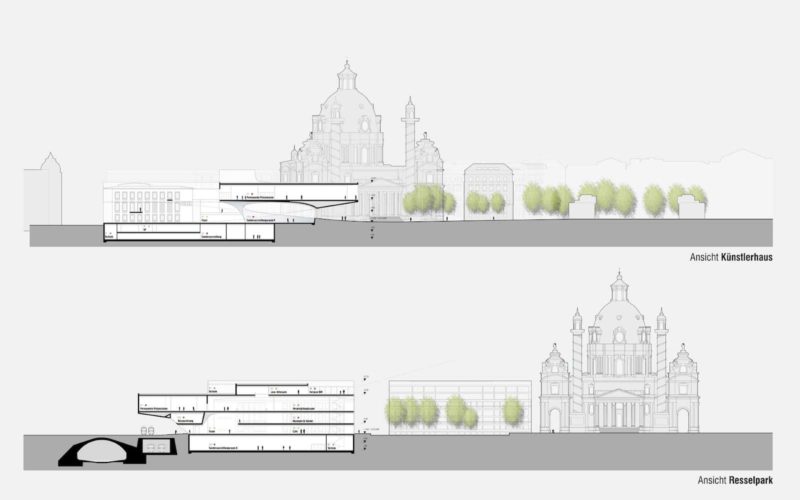
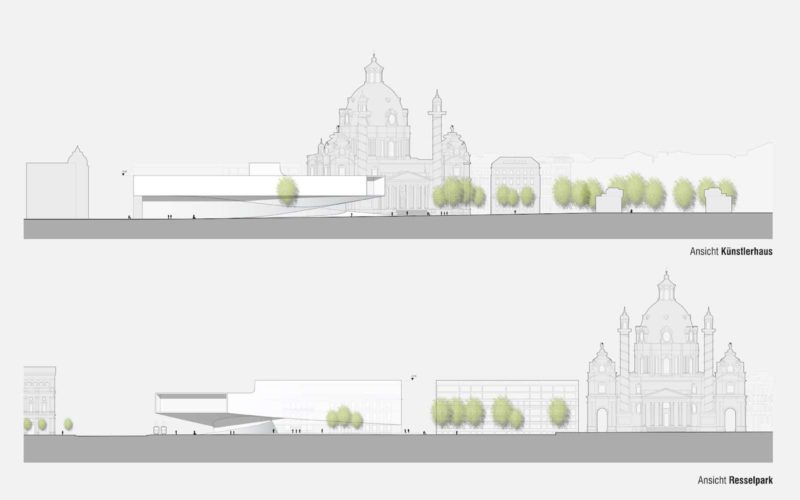
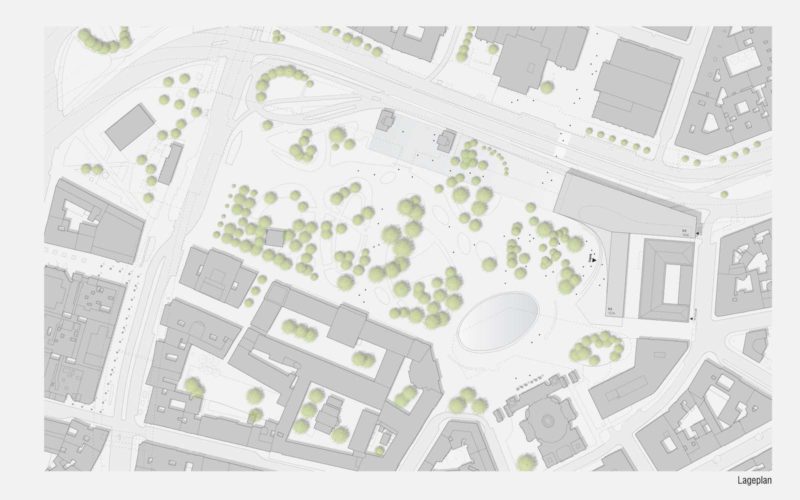
A public museum can justifiably lay claim to public space but here, sensibly, use is made of the void above the stream of traffic on Lastenstraße, rather than using the area of the park!
At the same time the new building is inserted as an equal partner in the group of cultural institutions and, together with the Musikverein and the Künstlerhaus, forms a clearly perceptible new cultural triumvirate. Viewed at a larger scale the museum preserves the value and position of the Konzerthaus and Akademietheater building, which it symmetrically reflects around the axis formed by Schwarzenbergplatz.
Finally, Karlsplatz is defined in spatial terms. In the same way as the flow of space – analogous to the flow of the River Wien – is narrowed at the transition from the Naschmarkt in the west by the Secession and Verkehrsbüro buildings, it is now concentrated and made narrower at the transition to Schwarzenbergplatz. At this point Otto Wagner’s first projects for the museum (1901 – 1903) also used building elements projecting into the traffic space.
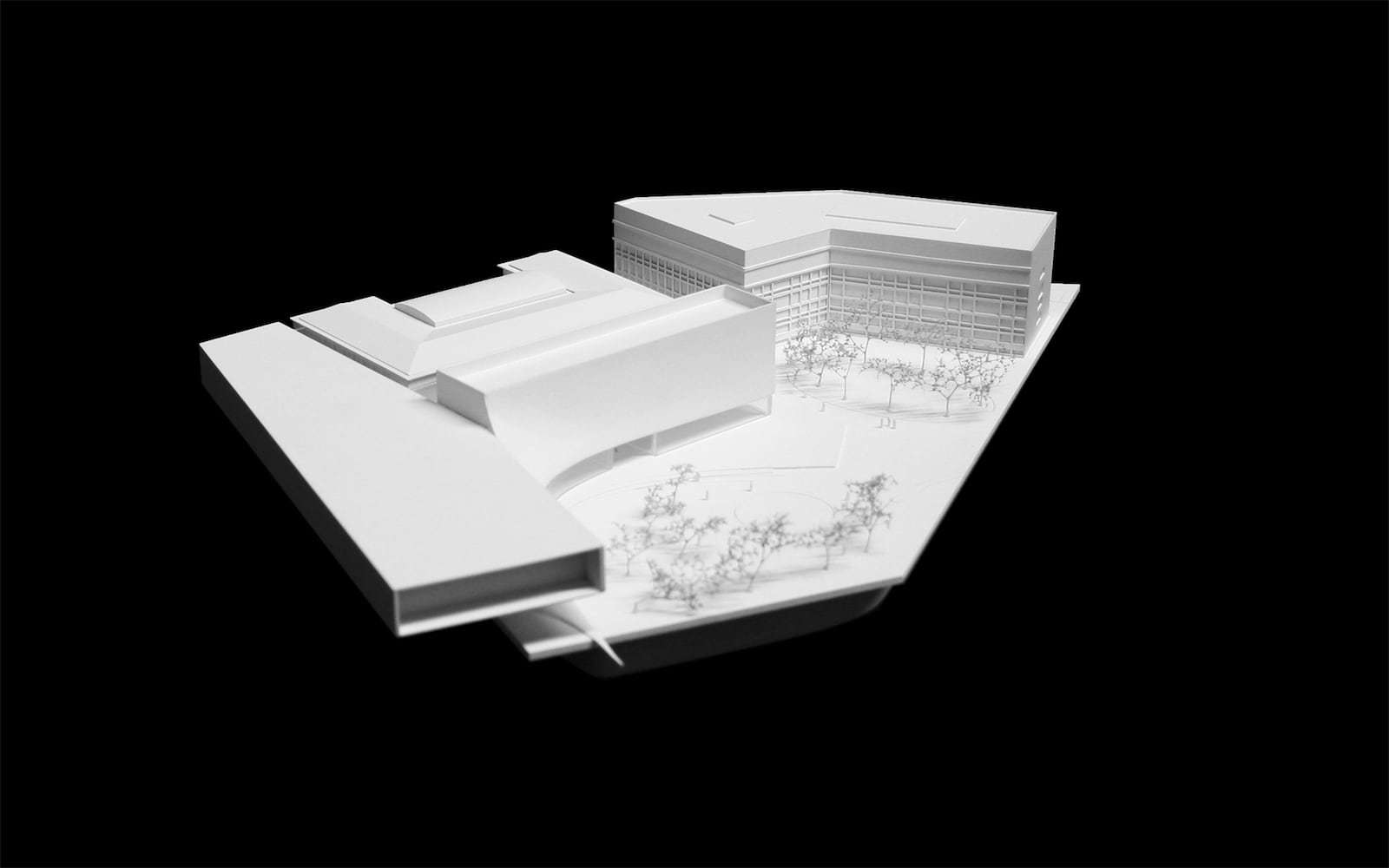
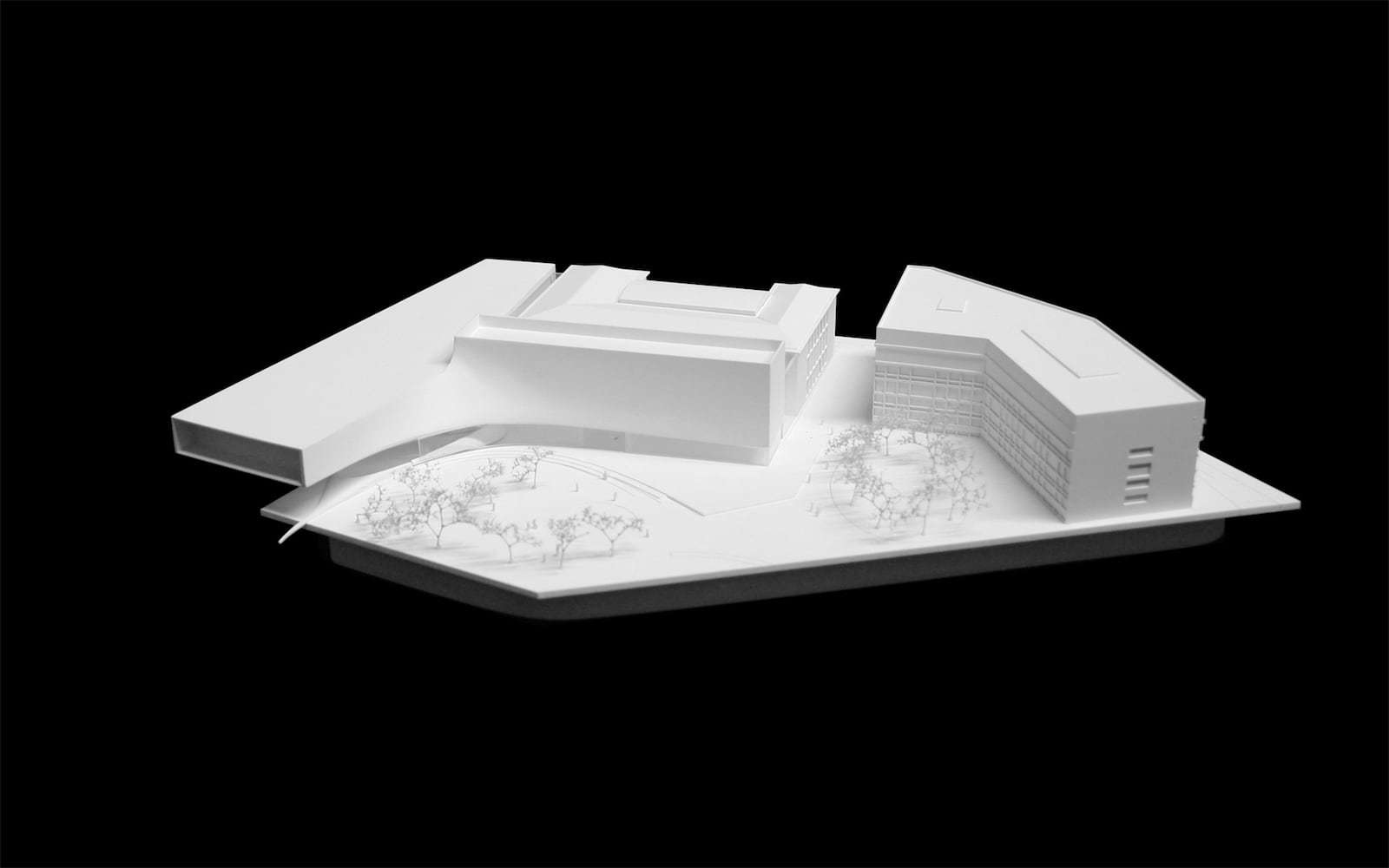
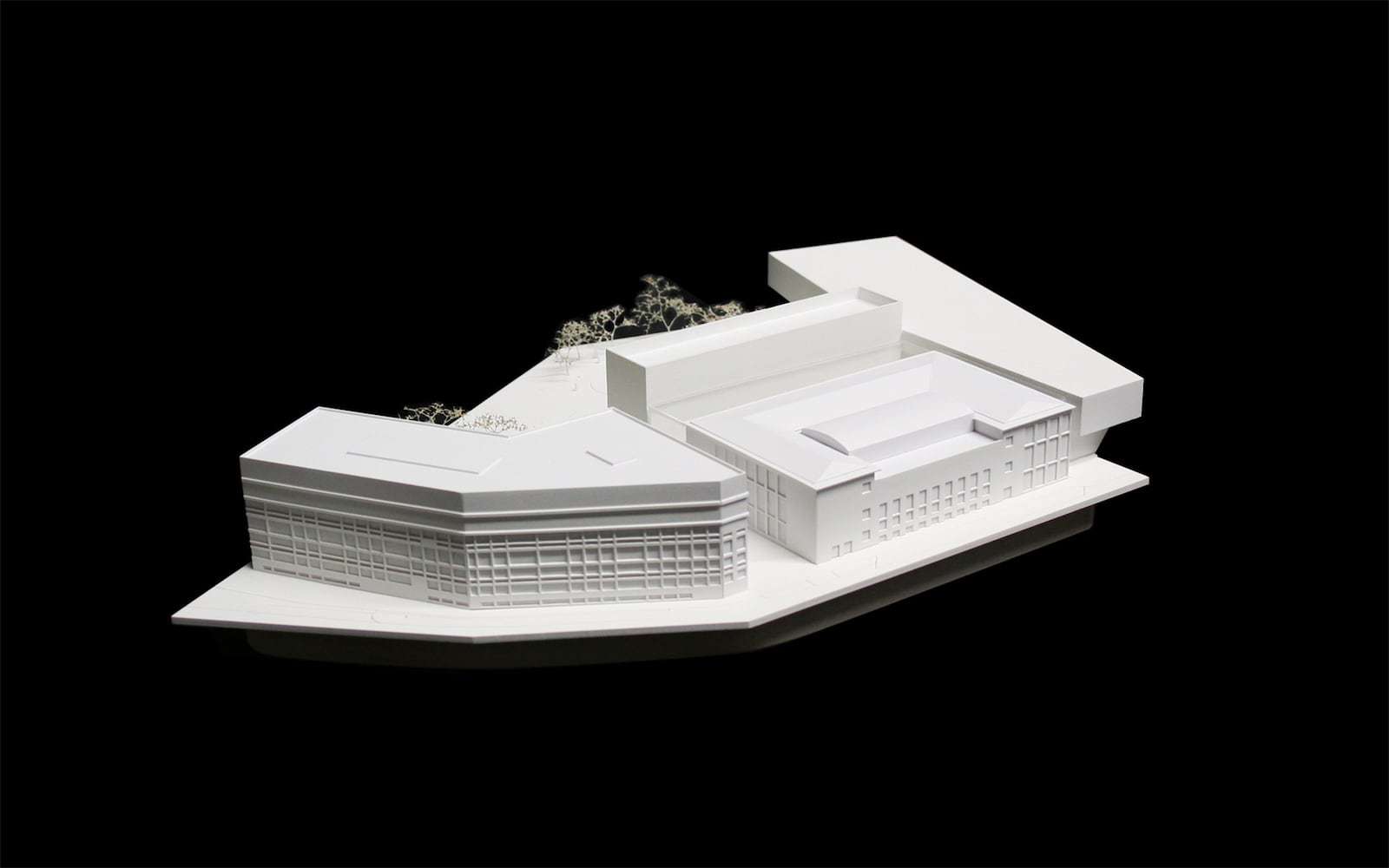
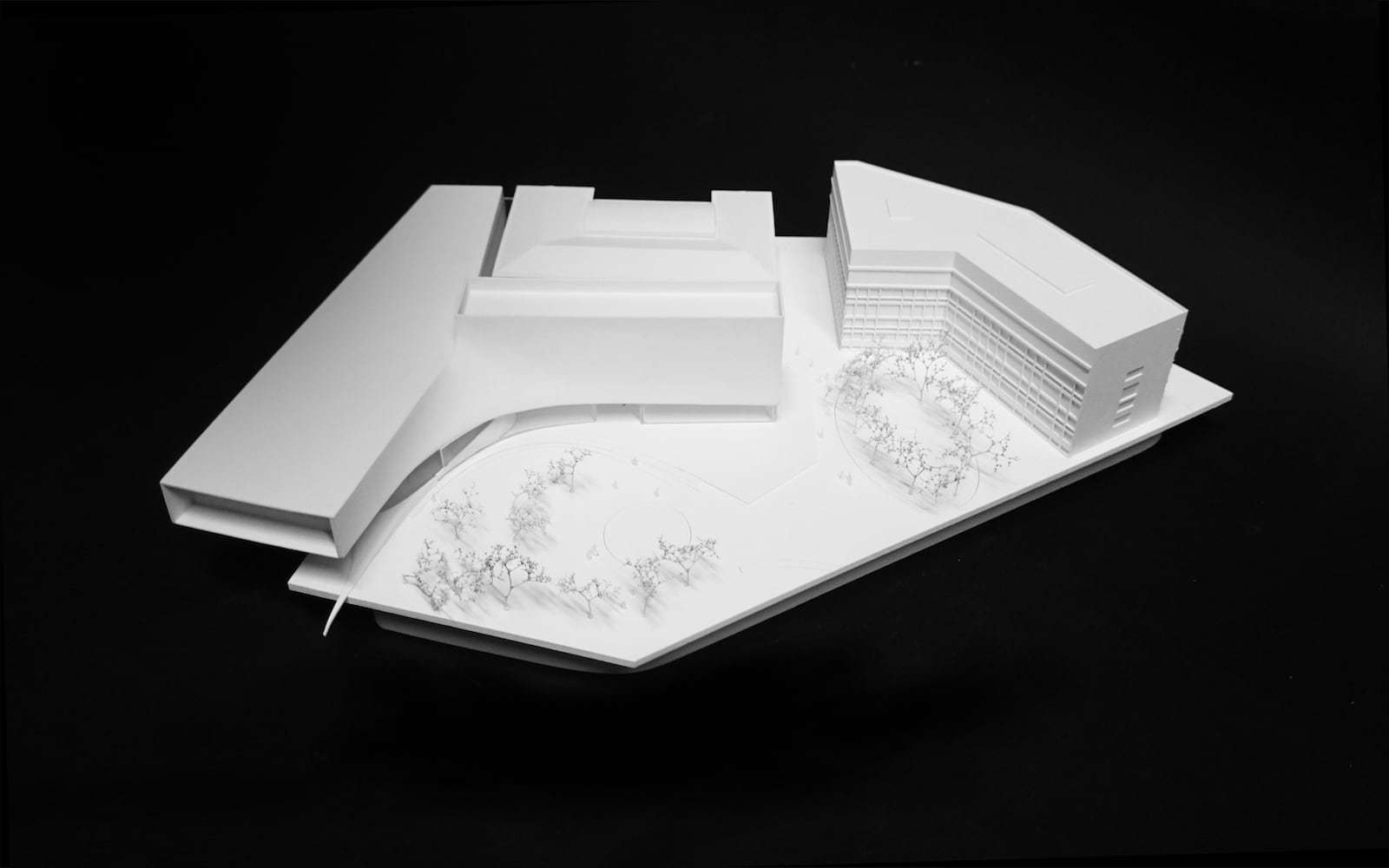
We see the new Wien Museum as an entity that exerts an impact extending far beyond its built boundaries, and view it more as a zone or a platform that is used. Its northern edge is derived precisely from the line of the Otto Wagner Pavilions. Thus we regard these pavilions as the first exhibits of the museum for Vienna
The second exhibit of the museum is the Haerdtl Building itself! It is now presented as a pavilion within a new, generously-sized museum hall. The two main facades of this building, which is a document of the 1950s, can be left completely untouched without any “upgrading” in energy or structural terms, as they are no longer exposed to the external climate.
The Haerdtl Building is given a new role as the house for the museum staff. The stairs, a particularly fine feature, becomes the central element of internal communication. Windows that have been blocked up for decades to facilitate the display of museum pieces can be opened up once again!

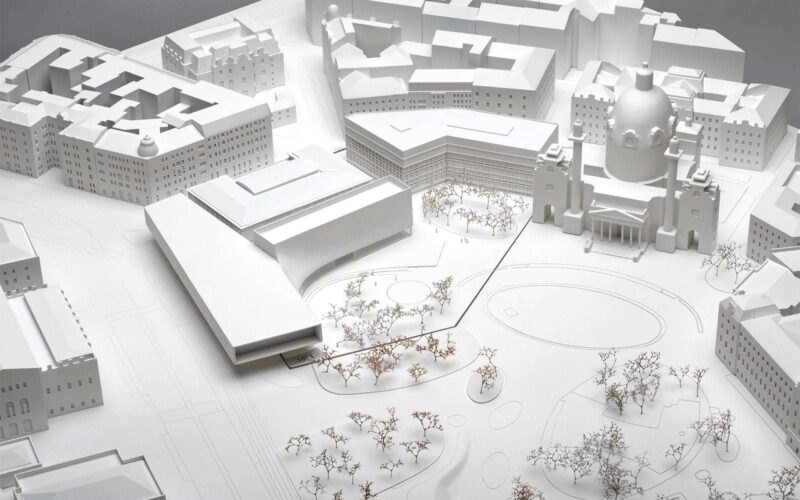
Pichler & Traupmann Architects
Mario Gasser
Bartosz Lewandowski
Peter Grandits
Wien Museum Projekt GmbH, Vienna
Start of planning: 2015
Usable floor area: 15.893 m²
Gross floor area: 18.075 m²
Built area: 7.571 m²
Location: 1st district of Vienna, AT
Function: Museum
Scope: Open, double-stage Competition
Harald Schmidt, Vienna